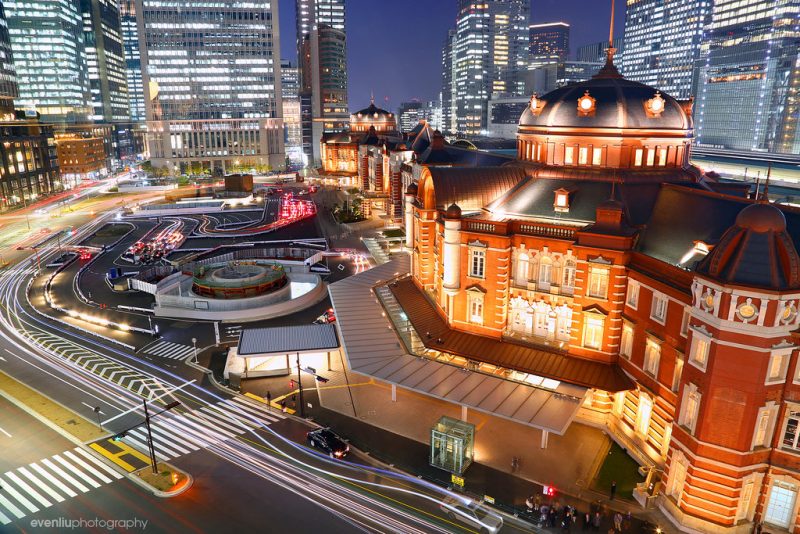Rail travel serves as a primary means of transportation in Japan. The Yokosuka Line, for example, spans 73 kilometers or 45 miles, originating in central Tokyo. International travelers can purchase a Japan Rail Pass, which provides quick and easy access to these efficient trains.
The Yokosuka Line, or Yokosuka-sen, was one of the first railways in Japan, built in 1889 to provide transportation to and from a strategic military base on the peninsula. Over the years, the line was extended to facilitate increased rail traffic – nearly 100,000 riders per day. Today, it not only relieves big-city congestion, but it provides travelers access Tokyo staples such as Tokyo Station’s Shinkansen bullet trains and the Yamanote Loop Line.
How can you use your JR Pass to navigate Tokyo and the Yokosuka Line? We’re here to help.
Table of Contents
JR Yokosuka Line Stations
While the Yokosuka Line officially begins south of Ofuna Station and stretches for nearly 24 kilometers, the entire railway from Tokyo Station to Kurihama Station is often called by this name, both by passengers and by operator JR East.
There are 19 stations along the Yokosuka Line. The full Yokosuka Line station list includes:
- Tokyo Station
- Shimbashi Station
- Shinagawa Station
- Nishi-Oi Station
- Musashi-Kosugi Station
- Shin-Kawasaki Station
- Yokohama Station
- Hodogaya Station
- Higashi-Totsuka Station
- Totsuka Station
- Ofuna Station
- Kita-Kamakura Station
- Kamakura Station
- Zushi Station
- Higashi-Zushi Station
- Taura Station
- Yokosuka Station
- Kinugasa Station
- Kurihama Station
Most trains along the Yokosuka Line are local trains. This means that they stop at all stations rather than just the main stations. These trains are somewhat slower than other train services such as the fabled bullet trains, reaching maximum speeds of 120 kilometers or 75 miles per hour.
Tokyo Station provides rail connections to virtually every part of mainland Japan, as well as transfers to other train lines, including the subway and the Narita Express to Narita International Airport.
Shimbashi Station and Shinagawa Station are other important stations along the Yokosuka Line. They provide access to the Yamanote Loop Line.
Through service is available to the Sobu Line.
JR Yokosuka Line Map
The Yokosuka Line links central Tokyo to the Kanagawa prefecture and popular destinations such as Kawasaki, Yokohama, Kamakura, and Yokosuka. Its route runs parallel to the Tokaido Main Line, the Yamanote line, and the Keihin-Tohoku Line.
The portion of the line between Tokyo Station and Shinagawa Station is subterranean, or underground.
Visit the map below to find out if the JR Yokosuka Line serves your destination.

Interesting Sights Along the Yokosuka Line
Tokyo itself is one of the biggest destinations in Japan. This “neon city” never sleeps, providing diversions to travels both day and night.
From Shimbashi Station, you can walk to the high-class shopping district of Ginza. More shopping is available in the commercial district surrounding Ofuna Station. You may be able to reach your hotel or discover a delectable restaurant near Shinagawa Station. Whether you are interested in shopping, cosplay, history, cuisine, or green spaces, Tokyo has something to interest you.

If you are interested in viewing some of Tokyo’s historic temples, consider a walk near Kita-Kamakura Station. These include Engakuji, famous for its massive bell; Shozokuin with its tooth of Buddha; Tokeiji, known as the “Divorce Temple;” the “Nectar Well” of Jochiji; and Ennoji, which is dedicated to the “Ten Judges of Hell,” among others. Some of the temples were founded nearly 1,000 years ago. The nearby Kamakura Station provides access to an additional 19 Shinto shrines and 65 Buddhist temples.
The Yokosuka Line travels through the Miura Peninsula along the coast of Tokyo Bay. Locals consider this area a “summer getaway” from the busy streets of Tokyo. Beaches are a must during warm weather, and on a clear day, you may catch a glimpse of the majestic Mount Fuji. Zushi is a favorite beach but it is often crowded.

If you don’t like crowds, there are dozens of other beaches to choose from. Jogashima Island, “a wild and windswept place,” can be accessed from Misaki. Or, you can catch a ferry from Kurihama to the larger Chiba peninsula.
Seafood and farmer’s markets also abound on the peninsula. The large daikon radish is the most well-known product of the area.
Will you be using the Yokosuka Line on your next trip to Japan. With your JR Pass in hand, you are ready to go!
